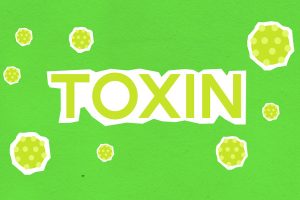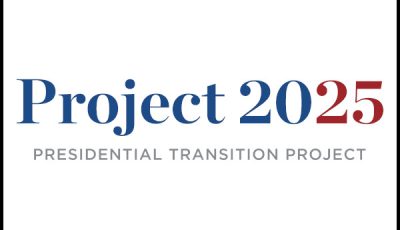Dr. Judith Reisman, the Woman Behind “Erotoxins”
 Editor’s Note: This post is the fifth in a series by YNOT’s LynseyG that gives an overview of the history of anti-porn sentiment in America. Part one provided an overview, part two covered anti-porn crusader Charles Keating, part three examined the role of feminist author Andrea Dworkin in the American anti-porn movement and part four looked at former Attorney General Edwin Meese.
Editor’s Note: This post is the fifth in a series by YNOT’s LynseyG that gives an overview of the history of anti-porn sentiment in America. Part one provided an overview, part two covered anti-porn crusader Charles Keating, part three examined the role of feminist author Andrea Dworkin in the American anti-porn movement and part four looked at former Attorney General Edwin Meese.
We’ve been exploring anti-porn crusaders for a few weeks now, but this week we’ll be meeting our first true zealot: Dr. Judith Reisman.
Reisman, who holds a doctorate in communications from Case Western Reserve University, has been railing against the normalization of sexuality in science and media for decades, largely under the guise of advocacy for children. At least, that’s what got her into crusading against the work of Alfred Kinsey, the founder of modern sexology.
Tragedy struck Reisman’s family in 1966 when her young daughter was molested by an older child. Reisman wrote of the incident: “He knew she would like it, he said, he knew from his father’s magazines, Playboy, the only ‘acceptable’ pornography of the time.” Looking for solace from friends and family, Reisman was repeatedly told that what she considered molestation may have been mutual experimentation, since “children are sexual from birth.”
Reisman set out to discover the source of what she considered horrendous slander against the innocence of children, and that’s how she discovered Alfred Kinsey. After reading his work, Reisman became convinced that Kinsey had in fact been a pedophile who used his research in the 40s and 50s as a cover for sexually abusing children. She presented her work at a conference in Jerusalem in the early 80s, expecting that sexology would be rocked to its core. Instead, she was met with silence. Silence she decided was the entire sexology community refusing to admit the truth about their founder, Kinsey—a truth that none of his many biographers have found any evidence to support.
But Reisman’s vocal anti-Kinsey work got the attention of the US government in the early eighties. She was brought to Washington by the strongly conservative DOJ of the time, and awarded a grant for just under $750,000 to study at American University. Her goal? “To determine whether Playboy, Hustler and other more explicit materials are linked to violence by juveniles.”
The study was criticized when a DOJ staffer pointed out that it could have been done for a mere $60,000 instead of half again the budget for the entire Meese Commission, but Reisman continued her research. And, as so many others before and since in the field of porn research have done, Reisman found exactly what she was looking for. In 1986, the same year that the Meese Report was issued, Reisman declared in a three-volume report that she’d perused “372 issues of Playboy, 184 issues of Penthouse and 125 issues of Hustler.” And that in those magazines, she’d encountered over 2,000 cartoons including children under 17 and nearly 4,000 other images of infants or kids.
If those numbers boggle your mind, you’re not alone. It seems likely that the DOJ hoped Reisman’s report would be helpful to the Meese Commission. But instead, Reisman was summarily laughed out of academia. Avedon Carol, a prominent researcher on sex crimes, called her report a “scientific disaster, riddled with researcher bias and baseless assumptions.” Criminologist Robert Figlio said that her definition of the word “child” in her research was “so inclusive and general as to be meaningless.” And sexologist Loretta Haroian called the report “paranoid, pseudoscientific hyperbole.”
The American University, where Reisman had conducted her study, refused to publish the report, citing concerns by an independent academic auditor. But Reisman decided that there was a vast conspiracy keeping her work hushed up. In her book A Personal Odyssey to Truth, she wrote, “The commercial sex industry now joined forces with the Kinsey Institute and academic sexology to prevent any light from being shed on their world,” and went on to claim that, “The Kinsey Institute had secretly threatened American University with a lawsuit if I was allowed to carry out my study.”
Not to be deterred, she went on to postulate the existence of what she called “erotoxins”—a “drug cocktail” of feel-good hormones (testosterone, oxytocin, dopamine and serotonin, she told The Guardian in 2005). These feel-good hormones are so powerful, she said, that when they’re released during porn viewing, they can produce “a measurable organic effect on the brain.” She was basically implying that porn can cause brain damage. “If porn can be shown to ‘subvert cognition’ and affect the parts of the brain involved in reasoning and speech,” she told the Guardian, then “these toxic media should be legally outlawed, as is all other toxic waste, and eliminated from our societal structure.”
Naturally, no one has found any evidence so far that “erotoxins” are dangerous. In fact, the American Academy of Forensic Sciences has said of Reisman’s theory that “facts stood in the way of her opinion.” But Reisman, who has buddied up with far-right conservatives on issues like abstinence-only education and the repression of pornography on the internet, has made her voice heard among the Christian right. And, as many of us are all too aware, the Christian right has quite a lot of pull in this country.
While we don’t hear the term “erotoxin” being thrown around very often in the media, Reisman’s alarmist attitude about pornography’s effects on the brain have clearly trickled into mainstream thinking about the way porn and even sex effect human beings. “Addictions” to porn and sex have been blamed for all manner of terrible behavior over the past twenty years, from Charlie Sheen’s abominable behavior in the early 2010s to the recent murder spree against Asian massage-parlor workers in Atlanta. And while it may be tempting to blame erotoxins for poisoning people’s minds, we’re pretty sure the real toxin is the willingness to blame sex for our problems.













